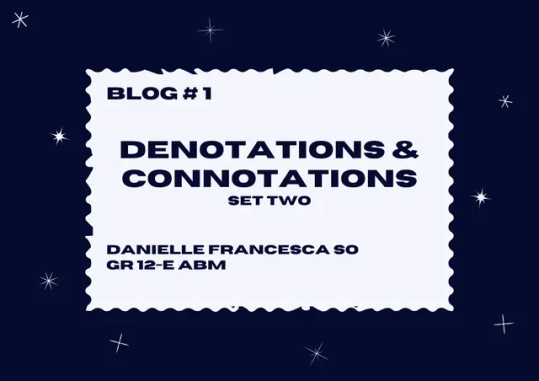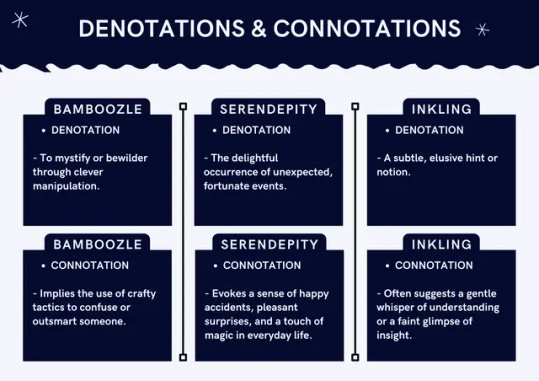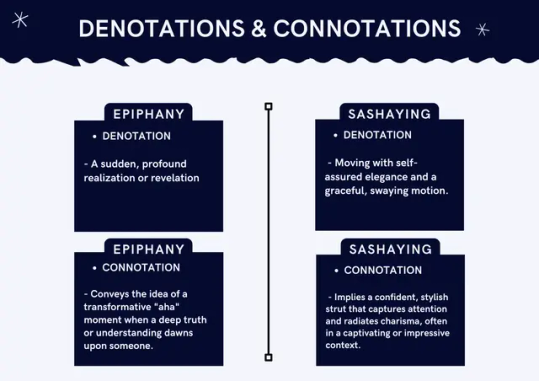#Connotation
Explore tagged Tumblr posts
Text
"There ought to be some way of dry-cleaning and disinfecting words."
- Aldous Huxley, 'Eyeless in Gaza'
#quotes#aldous huxley#books#reading#literature#eyeless in gaza#amreading#words#connotation#word use#definition#language#linguistics#taint#semiotics#propaganda#double speak#brave new world
6 notes
·
View notes
Text
Despite being synonyms, sleepy and tired give two very different images in my head
6 notes
·
View notes
Text
𝐩𝐢𝐧𝐤

I love the color pink. Day by day, I see colors in my life, like the yellow car i saw yesterday, or the current red book I'm reading. I like the other colors too. Everything doesn't have to be pink so that I can like it.
But still, there's a little hope in me that I'd see pink, because I love pink. Even if I'm okay with other colors, I feel happy when it's pink.
#creative writing#fiction#original story#short fiction#short story#story#books#writing#reading#tumblr writers#pink#connotation#implicitly
4 notes
·
View notes
Text
i.e. "im busy" "okay whatever",
"im sorry i cant make it" "its whatever",
"i dont want to" "whatever",
"i don't like theaters" "what the fuck ever", etc
5 notes
·
View notes
Text



BLOG #1 (RDL 2)
SO, Danielle Francesca P.
GR. 12-E ABM
@kim1643philo
3 notes
·
View notes
Text
She became that word that people use to render difficult and driven women weightless . . . 'quirky.'
Chris Kraus, from I Love Dick
#quirky#dismissive#connotation#word choice#misogyny#sexism#driven#difficult#ambitious#gender stereotypes#quotes#lit#words#excerpts#quote#literature#chris kraus#i love dick
3 notes
·
View notes
Text

Jewel Desirose R. De Mayo // 12-J HUMSS @kim1643philo
BAMBOOZLE
Denotation: to deceive by underhanded method or to confuse or throw off thoroughly or completely
Connotation: typically means to deceive or get the better of someone in a cunning or dishonest way. It implies the sense of confusion or bewilderment caused by deception.

SERENDIPITY
Denotation: the occurrence of fortunate or unexpected events by chance, often leading to pleasant and beneficial outcomes.
Connotation: generally positive and carries a sense of happy coincidence, luck, or the discovery of something delightful unexpectedly. It often implies the feeling of joy or contentment associated with fortunate and unplanned events.

INKLING
Denotation: a slight or vague understanding of something.
Connotation: typically neutral or slightly positive. It suggests a sense of curiosity, anticipation, or a faint awareness about something, which can be intriguing or pique one's interest.

EPIPHANY
Denotation: a sudden, profound realization or insight, often accompanied by a sense of clarity or enlightenment.
Connotation: overwhelmingly positive. It carries the sense of transformative and enlightening experience where someone gains profound understandings or insight.

SASHAYING
Denotation: to walk or to move in an elegant, confident, and often exaggerated or flamboyant manner, typically characterized by graceful or swaying movements of the hips and body.
Connotation: generally positive and can imply a sense of confidence, elegance, or even a touch of playfulness.
#practical research#pr2#yasujewels#denotation#connotation#denotation and connotation#school#grammar#definitions
2 notes
·
View notes
Text
Not to romanticize words, but...
"Whispered" implies a secret. Something not meant to be shared. It could be threatening or angry. Scared or malicious. Hopeful or hurtful. It's a message meant for one.
"Said softly" implies comfort and revelation. A gentle word or tender promise. It could be calming or reassuring. Surprised or resigned. Full of awe or understanding. It is a message meant for someone dear.
I know adverbs are controversial, but "said softly" means something different than "whispered" and this is the hill I will die on.
56K notes
·
View notes
Text
Blog Post 4
Connotation and Denotation Exercise on "Affairs of the Art"
youtube
Denotation:
This work of art is a 2D hand-drawn animation which talks about art, passions and obsessions. It is probably more accessible for an adult audience and it is set in modern times.
Connotation:
Right from the start we understand that the animation is going to be based on the concept of art and obsessions. We see a family who portrays different kinds of soft “addictions” (stuffed animals, insects, screws, trains, political parties, body modifications, rotting food, decaying bodies etc…). The protagonist, a 59-year old woman, has always been obsessed with art but has never tried actually developing that aspect of her life. She lives her whole life observing from a corner the weird older sister, who is not afraid to show her quirkiness and her peculiarities. She both fears and admires her. It seems that the “disturbed” genes come from their grandma who used to collect varieties of things.
Another interesting character is her son, who definitely shows some signs of autism in my opinion. He is precise, shows interest in very distinct things and doesn’t really know how to handle emotions, but he’s not afraid to show what he is and to embrace it.
Being surrounded by all these free-spirited people in her life, the main character feels pressured to let her creativity loose and starts giving up. However, it takes a lot of courage to embrace her artistic “career” and she starts feeling doubtful about everything. Themes like nostalgia of the past, fear of missing out and anxiety for the future start appearing in the short. The movie also talks about the power of judgment and the struggle of not being able “to fit in” and be understood, even by someone very close to us. As a matter of fact, especially at the beginning, her husband doesn’t really get the whole idea behind the wife’s new obsession. Sure, he participates because forced to do so, but he sometimes makes her feel wrong and lets some unhappy thoughts shine through.
A few very interesting topics are being represented in the movie, besides the very obvious ones. First of all, the main character is a woman… which is never something to take for granted. Sure, it’s a modern animation produced by a woman, but I still appreciate the choice. Moreover, it talks about a woman in her late 50s who decides to turn her life upside down, which cannot be assumed and plausible in all contexts. Secondly, it is pretty explicit therefore not accessible for all audiences. Nudity is never displayed in a sexual way, in fact it seems to add more comedy and personality to the different personas. Lastly, the subject of death appears a couple of times during the whole storyline. First with the death of a little mouse, victim of the sister’s experiments, and second the grandma. It’s never easy to talk about something like this, yet I think the directors found a way to make it perceivable in a lighter and almost comic way.
Overall, I think the main theme gravitates around acceptance. If we think about it, it takes way less time for the protagonist to accept the quirkinesses of her family than embracing her own.
I particularly enjoyed this animation because it’s something different from the rest. Besides the amazing talent of the artist and the fact that it’s all hand-drawn, which adds even more value to it, it talks about very interesting and deep topics which are being discussed in today’s world. The fact that, because of the very rough-looking lines, it almost looks unfinished makes it even more appealing to me. From other interviews about the same work, I can tell that the artists didn’t care much about the form, as well as about the meaning behind it…although not in such a deep way. Sure, the themes that appear are serious and very contemporary, but they are being represented in a very comic way. As an animator, I believe it is always good to take a look at different examples and get inspiration…and well, this definitely inspired me!
Reference list:
The New Yorker (2021). 2022 Oscar-Nominated Short: ‘Affairs of the Art’ | The New Yorker Screening Room. YouTube. Available at: https://www.youtube.com/watch?v=bAX9_rDvO_c [Accessed 18 Aug. 2022].
0 notes
Text
The Philosophy of Connotation and Denotation
The philosophy of connotation and denotation deals with the ways in which words and expressions convey meaning. These concepts are central to semantics, the study of meaning in language, and are used to distinguish between the literal or direct meaning of a term (denotation) and the associated or implied meanings that the term evokes (connotation).
Key Concepts:
Denotation:
Literal or Primary Meaning: Denotation refers to the direct, explicit meaning of a word—the specific object, idea, or concept that the word points to. It is the "dictionary definition" of a term, the meaning that is universally understood and unambiguous.
Objective Reference: Denotation is concerned with the objective relationship between a word and what it refers to in the real world. For example, the word "rose" denotes a type of flower.
Connotation:
Associated or Implied Meanings: Connotation involves the secondary, associated meanings that a word carries in addition to its denotation. These meanings can be emotional, cultural, or contextual, and they often evoke certain feelings, associations, or images.
Subjective and Contextual: Unlike denotation, connotation is more subjective and can vary depending on the context, culture, or individual interpretation. For instance, the word "rose" may connote romance, beauty, or love.
Importance in Language and Communication:
Nuances of Meaning: Understanding the difference between denotation and connotation is crucial for grasping the full meaning of language. Words with the same denotation can have very different connotations, which can affect how they are perceived or interpreted.
Cultural and Emotional Significance: Connotations are heavily influenced by cultural context and can carry significant emotional weight. For example, the word "home" denotes a place of residence, but it may connote warmth, security, and family.
Examples in Language:
Positive and Negative Connotations: Words can have positive, negative, or neutral connotations even when their denotations are similar. For example, "childlike" (positive connotation: innocence) vs. "childish" (negative connotation: immaturity).
Synonyms with Different Connotations: Consider the words "slim" and "skinny." Both denote a thin person, but "slim" often has a positive connotation (attractiveness), while "skinny" can have a negative connotation (underweight or unhealthy).
Philosophical Implications:
Meaning and Interpretation: Philosophers and linguists have explored how connotation and denotation affect meaning and communication. The distinction helps in understanding how language can influence thought, perception, and behavior.
Semiotics and Symbolism: The study of connotation and denotation is also relevant in semiotics, the study of signs and symbols. Denotation relates to the literal signified meaning, while connotation involves the symbolic or cultural meanings attached to a sign.
Applications in Literature and Rhetoric:
Literary Analysis: In literature, connotation plays a key role in the interpretation of texts, where the choice of words can convey deeper meanings and evoke emotions beyond their literal sense.
Rhetorical Strategies: Speakers and writers often choose words with specific connotations to persuade, influence, or evoke certain responses from their audience.
Challenges and Criticisms:
Ambiguity and Miscommunication: The connotative meanings of words can lead to ambiguity or miscommunication, especially in cross-cultural contexts where different connotations might be attached to the same word.
Evolving Meanings: Connotations can change over time as cultural and social contexts evolve, making it challenging to pin down the exact connotative meaning of a word across different eras or societies.
The philosophy of connotation and denotation provides a framework for understanding the complexities of meaning in language. While denotation gives us the direct, literal meaning of a word, connotation enriches language by adding layers of associated or implied meaning. This distinction is essential for effective communication, literary analysis, and the study of semantics and semiotics. Understanding how words can carry different connotations helps in interpreting language more fully and appreciating its nuanced impact on thought and culture.
#philosophy#epistemology#knowledge#learning#education#chatgpt#ontology#Connotation#Denotation#Semantics#Philosophy of Language#Literal Meaning#Implied Meaning#Cultural Connotations#Emotional Associations#Semiotics#Symbolism#Language Interpretation#Rhetoric and Communication#Word Choice
0 notes
Text

Twitter LGBTs are so sanitized it’s embarrassing
138K notes
·
View notes
Text
There’s a real fine line with ‘obsession’ for me. Maybe it’s the connotations the word holds. If I’m honest, it makes my skin crawl a bit.
#obsession#fine line#like it#Love it#lost it#connotation#context#words#random thoughts#lha#obsessed#1introvertedsage#intsa original#poetic#writing#healing#healing the Mind
0 notes
Text
saw a poll about whether you prefer corruption or redemption arcs and i realized that for me it's not really either, it's a distillation arc: when a character becomes the most intense version of what they could be, everything inessential falling away or being discarded so that only the core remains.
#(yes i considered “purification” but that has Connotations)#achilles starts out angry but in a human way; he ends as divine wrath embodied.#you know.#trope corner
26K notes
·
View notes
Text
Alone. What an odd gloss we have here on Alone at last. Since alone at last, for every hero in a gothic, every villain in a melodrama, traditionally assumes a cast of two.
Renata Adler, from Pitch Dark
#tropes#wordplay#alone at last#connotation#i think we're alone now#alone together#alone#quotes#lit#words#excerpts#quote#literature#renata adler#pitch dark
2 notes
·
View notes
Text
"5yo, I didn't say you can't, I just said, *why* do you want to take a plastic bag of wet ramen noodles upstairs?"
"why do *you* want to be a criminal?!?"
the stage of language development where she knows the rough connotation of words, but has no clue to the denotation, is odd
0 notes
Text
earlier today I had the sudden very strong desire to eat lettuce but then it went away after like two seconds. do you guys agree that the difference between client and customer is that clients are more likely to be getting a service and customers are getting goods
0 notes